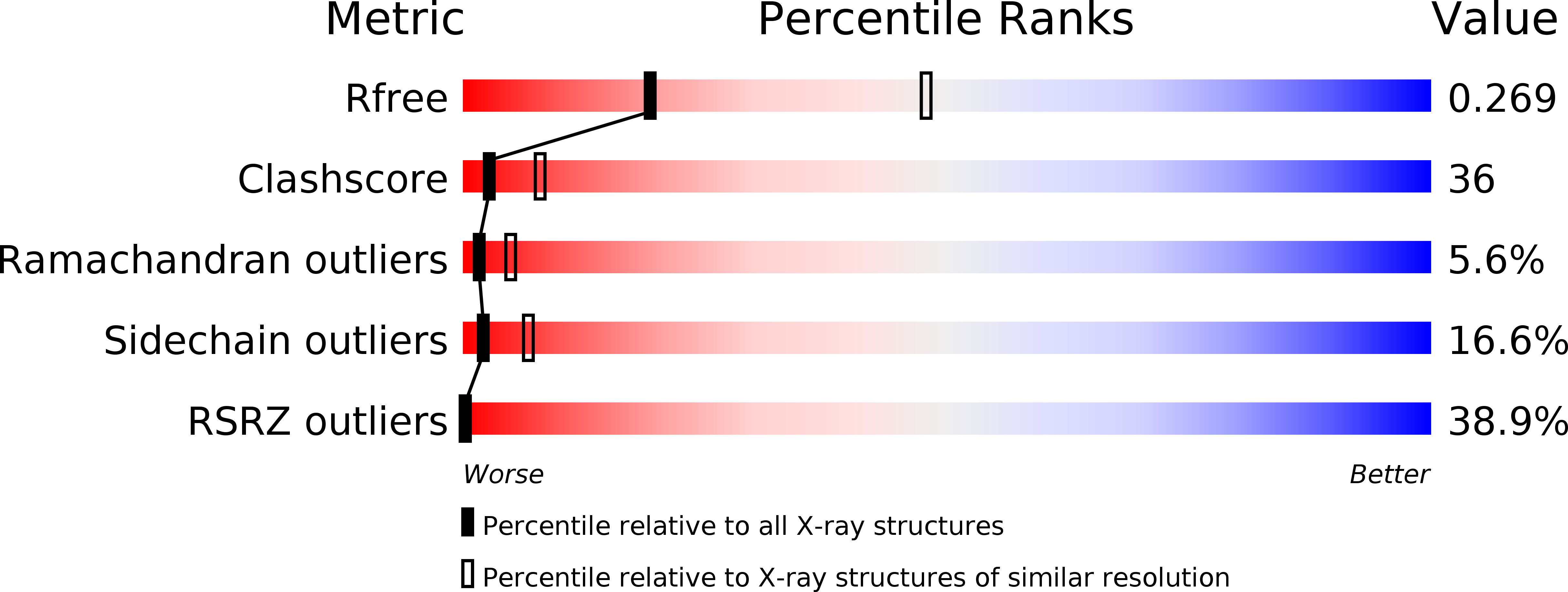
Deposition Date
2007-09-18
Release Date
2008-06-17
Last Version Date
2023-08-30
Entry Detail
PDB ID:
2RBA
Keywords:
Title:
Structure of Human Thymine DNA Glycosylase Bound to Abasic and Undamaged DNA
Biological Source:
Source Organism:
Homo sapiens (Taxon ID: )
Host Organism:
Method Details:
Experimental Method:
Resolution:
2.79 Å
R-Value Free:
0.27
R-Value Work:
0.22
R-Value Observed:
0.23
Space Group:
P 65


